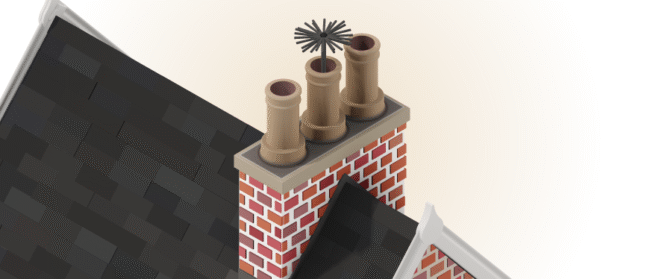
Essential checks and maintenance tips to help protect your home during the winter months.
As the weather cools and homes are sealed against the chill, many UK households begin to notice an unwelcome guest on their walls and ceilings: black mould. It often appears in the same places each year, spreading quietly behind furniture or around window frames. Left untreated, it can damage surfaces, cause unpleasant odours and contribute to health issues. This guide explains how common black mould is in the UK, where it forms, what causes it, how home insurance treats it, and how to remove and prevent it safely.
Black mould is far from rare. The English Housing Survey reports that around 5% of homes in England show signs of damp, condensation or mould. Rates tend to be higher in the private rented sector, often due to limited ventilation or poor insulation. A separate industry report found that more than half of UK residents have experienced mould at least once, with issues peaking from October to March when heating is on, windows stay closed and humidity levels rise.
In short, black mould is a seasonal but very common issue that affects properties of all types, from modern flats to older stone-built homes.
Mould thrives in cool, damp and poorly ventilated places. It often takes hold where warm indoor air meets cold surfaces and condenses.
You’re most likely to find black mould in:
Cooking, showering, boiling the kettle and drying clothes indoors release water vapour. Without good airflow, that moisture settles on cold surfaces where mould spores take hold.
Older or energy-inefficient homes are particularly vulnerable. Double glazing without trickle vents, blocked air bricks or missing/under-used extractor fans can trap moist air inside. See practical airflow tips from the Energy Saving Trust.
Leaking pipes, cracked gutters, missing roof tiles or damp walls introduce additional moisture. Over time, this creates ideal conditions for mould growth.
Rooms that are rarely used, or properties left empty, stay cold and still, increasing condensation risk, especially in winter. If a property will be empty for a while, consider appropriate cover such as unoccupied home insurance.
Home insurance rarely covers black mould directly, but there are exceptions depending on how and why it developed.
In most cases, mould is seen as a maintenance issue resulting from condensation or poor ventilation, for example, showering without an extractor fan, drying clothes indoors with windows closed, or failing to heat and air the property regularly. These are considered preventable, so insurers generally won’t cover the cost of mould removal.
However, if mould results from a genuine escape of water (such as a burst pipe or a leaking appliance), related damage may fall within policy cover, depending on the specific circumstances.
If the insurer accepts that the mould developed as a consequence of a covered escape of water, and that the homeowner acted responsibly, mould removal might be included as part of the claim.
For general cover details see our buildings insurance cover and contents insurance cover pages.
Small patches can often be treated at home with sensible precautions. For health guidance, see the UKHSA guidance.
Prevention is largely about controlling moisture and ensuring steady airflow throughout the home.
Open windows for a few minutes each morning, even in winter. Use extractor fans in kitchens and bathrooms, keep trickle vents open, and close internal doors when cooking or showering.
Helpful in rooms that struggle to dry out, such as basements or north-facing bedrooms.
Avoid drying clothes indoors where possible. Use lids on pans, and keep the kitchen door closed during cooking to reduce steam spreading.
Keeping rooms at a steady, moderate temperature helps reduce condensation on cold walls.
Check gutters, downpipes, roofs and internal plumbing for signs of leaks and repair quickly. Prompt action can prevent an escape of water turning into a bigger problem.
Plants like peace lily, Boston fern, English ivy and spider plant can absorb a small amount of moisture and may improve air quality. They’re no substitute for ventilation, but can help.
If mould keeps returning after cleaning, covers more than about a square metre, or is accompanied by damp smells and staining, consult a qualified damp or mould specialist. They can test for hidden leaks, cold bridges and other root causes. Seek help promptly if anyone in the household has breathing difficulties or allergic reactions linked to mould exposure. Children, older adults and people with asthma are especially vulnerable (see the NHS guidance).
Black mould can aggravate respiratory conditions and allergies, particularly for children, older adults and people with asthma. Improve ventilation, clean small patches safely, and seek medical advice if symptoms occur.
Generally no, as mould is usually classed as a maintenance issue. However, if it develops as a direct result of an insured escape of water and you’ve acted promptly, related damage may be covered.
Excess moisture meeting cold surfaces, from everyday activities, poor ventilation/insulation, leaks or prolonged under-heating and unoccupancy.
Wear gloves, a mask and eye protection; ventilate; clean with a mould remover or diluted bleach (1:10); dispose of cloths; dry thoroughly; repaint with anti-mould paint.
Daily ventilation, effective extractor fans, steady background heat, dehumidifiers in problem rooms, and prompt leak repairs.
If mould covers a large area, keeps returning, or you suspect structural moisture (leaks, failed insulation). Seek help sooner if household members have breathing difficulties.

Essential checks and maintenance tips to help protect your home during the winter months.

This article discusses what chimney safety entails and the best practices needed to maintain its structural integrity.